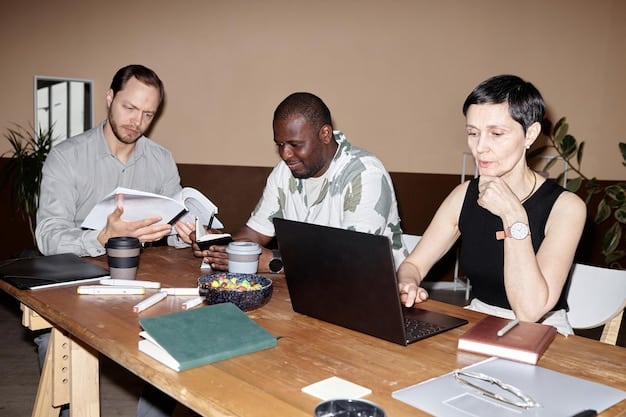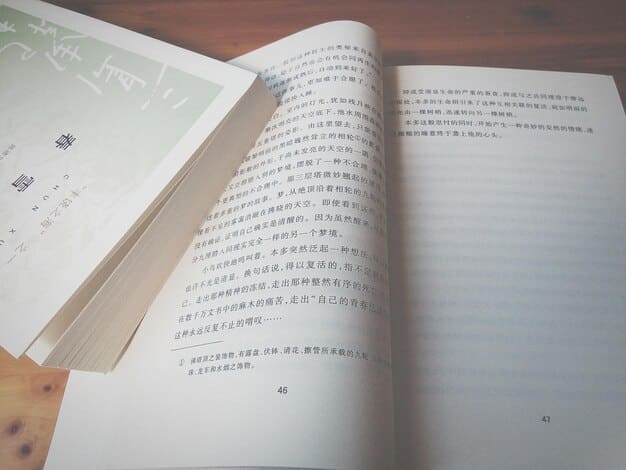Decoding Korean Honorifics: Your 2025 Guide for Americans

Decoding Korean honorifics is essential for Americans engaging with Korean culture, ensuring respectful communication in both personal and professional settings by understanding levels of formality and addressing individuals appropriately, especially in 2025.
Navigating Korean culture can be both fascinating and challenging, especially when it comes to language. One of the most crucial aspects to understand is the system of honorifics. This guide, decoding Korean honorifics, will provide a practical understanding for Americans in 2025, ensuring respectful and effective communication.
Understanding Korean Honorifics: Why It Matters
Korean honorifics are more than just polite words; they represent a complex system of social hierarchy and respect deeply embedded in Korean culture. For Americans, understanding this system is key to building strong relationships and avoiding unintentional offense. Let’s explore why mastering these nuances can significantly improve your interactions in Korea.
The Importance of Showing Respect
In Korean society, age, social position, and relationship status greatly influence how people interact. Using the correct honorifics demonstrates that you recognize and respect these social cues, which is highly valued.
Building Stronger Relationships
When you make the effort to use appropriate language, it shows genuine interest in understanding and appreciating Korean culture. This goes a long way in fostering trust and building meaningful connections.
- Demonstrates cultural sensitivity
- Avoids misunderstandings and awkward situations
- Opens doors to deeper relationships
By understanding and applying Korean honorifics, you will be well-equipped to navigate social and professional situations with confidence and respect. Remember, it’s not just about using the right words, but also conveying the right attitude and intention.
Key Components of Korean Honorifics
To effectively decode Korean honorifics, it’s important to understand the key components that make up this linguistic system. These elements determine the level of formality in your speech and how you address different individuals. Let’s break down some of the essential components.

Subject Honorification (주체 높임법)
Subject honorification is used to elevate the person you are talking about, typically someone older or of higher status. It involves using special verb endings and vocabulary to show respect.
Object Honorification (객체 높임법)
Object honorification elevates the object of your sentence, often used when talking about someone’s possessions or actions. This is less common in modern Korean but still important to recognize.
Korean address terms are an integral part of showing respect. These terms vary based on age, social status, and the relationship between the speakers. Understanding these terms helps you address everyone appropriately.
- Using titles such as “선생님” (seonsaengnim) for professionals
- Addressing elders with “할아버지” (harabeoji) for grandfather or older man and “할머니” (halmeoni) for grandmother or older woman
- Knowing when to use someone’s full name versus a more casual term
Understanding these key components provides a solid foundation for decoding Korean honorifics and using them correctly in various social contexts. By mastering these elements, you can confidently navigate conversations and demonstrate your respect and cultural awareness.
Formal vs. Informal Speech in Korean
One of the most critical aspects of Korean honorifics is understanding the difference between formal and informal speech. This distinction dictates the verb endings and vocabulary you should use in different situations. Let’s delve into the nuances of each style to help you determine when to use them appropriately.

Formal Speech (존댓말)
Formal speech, known as “존댓말” (jondaenmal), is used when speaking to someone older than you, of higher status, or someone you don’t know well. It’s characterized by specific verb endings that convey respect.
Informal Speech (반말)
Informal speech, or “반말” (banmal), is used with close friends, family members who are younger than you, or people you have a clear understanding can be addressed informally. Using it inappropriately can be seen as disrespectful.
Using the right speech style requires keen observation and sensitivity. Consider the context, the relationship, and the age differences. When in doubt, it’s always better to err on the side of formality.
- Start with formal speech in new interactions
- Observe how others address each other to pick up on cues
- Pay attention to verb endings to determine the level of formality
Understanding when to use formal versus informal speech is a fundamental aspect of Korean communication. By mastering this distinction, you’ll be better positioned to navigate various social situations and build stronger relationships based on mutual respect and understanding.
Practical Tips for Americans Learning Honorifics
Learning Korean honorifics can seem daunting at first, but with the right approach and practical tips, it becomes more manageable. Here are some strategies tailored for Americans to help you navigate this intricate system and improve your understanding and usage.
Start with the Basics
Begin by learning the most common honorific verb endings and address terms. Focus on mastering these fundamentals before moving on to more complex aspects.
Immerse Yourself in Korean Culture
Watch K-dramas, movies, and variety shows to hear how honorifics are used in real-life conversations. Pay attention to the context and relationships between the speakers.
Cultural sensitivity is paramount when learning and using Korean honorifics. The key is to be mindful, respectful, and willing to learn from your mistakes. Embrace the learning process with patience and humility.
- Be observant and pay attention to social cues
- Don’t be afraid to ask for clarification
- Show genuine interest in Korean culture and customs
By following these practical tips and staying committed to learning, you can gradually improve your understanding and usage of Korean honorifics. Remember that cultural sensitivity and genuine effort go a long way in building positive relationships and demonstrating respect.
Common Mistakes Americans Make with Honorifics
Even with diligent study, Americans learning Korean honorifics may encounter common pitfalls. Being aware of these mistakes can help you avoid them and refine your communication skills. Let’s address some frequent errors and provide guidance on how to steer clear of them.
Using Informal Speech Too Early
One frequent mistake is using informal speech before establishing a close relationship with the other person. This can come across as disrespectful, especially when addressing someone older or of higher status.
Ignoring Age and Social Status
Failing to consider age and social status is another common error. Always be mindful of these factors when choosing the appropriate level of formality in your speech.
Correcting mistakes is part of the learning process. The key is to learn from them and continue striving for improvement. With awareness and practice, you can refine your skills and communicate more effectively.
- Be mindful of honorific verb endings
- Ask for clarification when unsure
- Seek feedback from native speakers
By being aware of these common mistakes and actively working to avoid them, you can enhance your communication skills and build stronger, more respectful relationships. Remember, cultural sensitivity and a willingness to learn are essential for navigating the nuances of Korean honorifics.
The Future of Korean Language Learning for Americans
As cultural exchange between the U.S. and Korea continues to grow, the future of Korean language learning for Americans looks promising. With advancements in technology and increased accessibility to learning resources, there are more opportunities than ever to master the Korean language and its honorifics. Let’s explore the evolving landscape of Korean language education and the exciting possibilities ahead.
Technological Advancements
Language learning apps, online courses, and AI-powered tutors are making it easier than ever to learn Korean. These tools offer personalized learning experiences and real-time feedback, helping learners progress at their own pace.
Cultural Exchange Programs
Many exchange programs and immersion opportunities are available for Americans to study in Korea. These experiences offer invaluable exposure to the language and culture, accelerating the learning process.
The future of Korean language learning is bright, with endless possibilities for Americans to expand their linguistic skills and cultural understanding. By embracing these opportunities and staying committed to learning, you can unlock new doors and forge meaningful connections in the global community.
- Embrace technology-driven learning
- Participate in cultural exchange programs
- Continue to practice and refine your skills
The future of Korean language learning for Americans is poised for growth and innovation. By embracing technology, immersing oneself in the culture, and staying committed to lifelong learning, mastering Korean honorifics and the broader language is more achievable than ever.
Key Aspect
Brief Description
🗣️ Speech Levels
Formal (“jondaenmal”) used with elders/strangers; Informal (“banmal”) with close friends/younger family.
🤝 Address Terms
Use titles like “seonsaengnim” (teacher/professional) or familial terms for elders.
🙇 Subject Honorification
Elevates the person you’re talking about using special verb endings.
✔️ Cultural Sensitivity
Be observant, respectful, and willing to learn from mistakes.
Frequently Asked Questions (FAQ)
[Is it always necessary to use honorifics in Korean?]
▼
Honorifics are crucial in most social situations, especially with elders, superiors, or strangers. While casual speech exists, err on the side of formality to avoid disrespect.
[What is the most common mistake Americans make with Korean honorifics?]
▼
A frequent error is using informal speech too early in a relationship. It’s best to start formally and adjust based on the other person’s cues.
[How can I practice using Korean honorifics effectively?]
▼
Immerse yourself in Korean media, practice with language partners, and pay attention to how native speakers use honorifics in various contexts.
[Are there regional differences in using Korean honorifics?]
▼
While the core principles remain consistent, nuances can vary by region. Observing and adapting to local customs is always a good idea.
[What should I do if I accidentally use the wrong honorifics?]
▼
A sincere apology and correction are usually sufficient. Koreans appreciate the effort and understanding of their culture.
Conclusion
Decoding Korean honorifics is an ongoing journey, but with dedication and cultural sensitivity, it’s an achievable goal for Americans. By understanding the key components, avoiding common mistakes, and embracing the learning process, you can significantly improve your communication skills and build meaningful relationships within the Korean community.
Read more content





